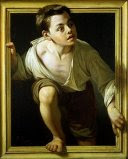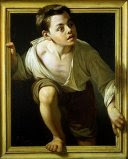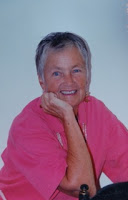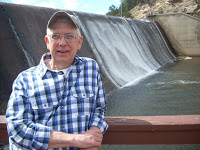Interesting topic this is. It makes me think of many possibilities but, I reject most of them because I don’t want to break into anything. A prison sentence might follow on a charge of burglary.
The word “gay” includes the entire range of homosexual behaviors for both females and males, just as the word “mankind” includes both genders. However, for the purposes of this presentation, “gay” just refers to the male homosexual culture. The obvious reason for this is that I am gay and I know nothing about lesbian or transgender issues or culture.
While I’ve only admitted to myself that I am gay since about June of 2010 and thus began to associate with gay males and having a limited exposure to “gay culture,” I have 64 years of exposure to gay stereotypes, jokes, comments, putdowns, movies, music, history, biographies, porn movies and videos, miscellaneous sex play, and 27 happy years of heterosexual marriage which produced four wonderful children. As a result, my views on this topic are from those of an outsider still putting together pieces of a puzzle when I am not sure what the puzzle is all about or if I have all the pieces. In a way, the situation is similar to looking for a map to lead you to a destination but not knowing what the destination really is.
This may seem strange or even unbelievable to gay men that knowingly have been gay their whole lives and lived with that knowledge without the benefit (or perhaps burden) of being “in the closet.” However, this is my story and I believe I have explained my perceptions and exposed my biases with regard to the topic. So, just what is “gay culture” anyway? Is it just a culture of disease, loneliness, and death; or is it something else?
I am not convinced that there even is an “over arching” gay culture. I had some blood tests done but that only revealed that there are heterosexual antibodies throughout my system. (Wow! I am immune to straightness.) In an attempt to culture gay organisms, some of my various bodily fluids were smeared onto Petri dishes. No growth of gay organisms appeared. So, how can I break into a gay culture if none exists, can be grown, or found?
All I know for a fact is that most (if not all) gay men seem to like to play with the penises of other men. If that were all, then that is the definition of “gay culture.” But, I am aware of subcategories of gay behaviors and preferred activities which would put the lie to such a simplistic definition.
Some straight or gay men are cross-dressers. Some men like pornography (stories or videos) but not all gay men do. Some like gay themed movies. Some love operas. Some love men older than they are. Some love younger men. Some like “golden showers.” Some like to party hardy. Some use the noxious weed or drink to excess. Some are into the BDSM scene. Some are homebodies. Some are homeless.
Some love to travel the world and can afford it. Some are major philanthropists while others are dirt poor. Some are bikers or leather-men. Some have “fashion sense” while others (like myself) could care less about fashion. Some are effeminate and others the epitome of masculinity. All have their faults and foibles with some holding what people would classify as loose morals. Yet others have the most amazing sense of morality and have higher standards than the heterosexual world. Some are spiritual and others not so much. Some live “in the closet” and others are openly gay now or throughout their entire lives. Some were (or are) married, while others lived the bachelor life.
Many are highly successful executives or entrepreneurs while others teach, fight fires, or police society. Nonetheless, with all the gay men I have met personally, I discovered that every one of them is a fine and decent person.
All these various subcategories exist and any one gay man might fit into several groups but no one person fits into all of them. Unfortunately, there exists “conflict” between some of these groups, which is a totally unbecoming and unnecessary practice for gay men. The conflict seems to be over who can or cannot be a member of a particular category of gay men or in other words, who is a member of that particular narrow and exclusive “culture.” Hence, my assertion that there is no one answer to the question of “what is gay culture” and so there is no way to break into it. The best I can hope for is to find a group of gay men who share my desires, likes, and dislikes and to be around as many of them as I can manage.
Therefore, here are my desires, likes, and dislikes and you tell me where I fit in. I desire to live a good and decent life trying to be a better person today than I was yesterday. I try to live the Boy Scout Law and be: Trustworthy, Loyal, Helpful, Friendly, Courteous, Kind, Obedient, Cheerful, Thrifty (that’s a hard one for me), Brave, Clean, and Reverent. I try to keep my Boy Scout Oath: On my honor, I will do my best to do my duty to God and my country and to obey the Scout Law; to help other people at all times; to keep myself physically strong; mentally awake; and morally straight.
I like gay themed movies, stories, books, and videos; some opera; classical music; 40’s, 50′, 60’s, and some additional decades’ music (but I’m very particular about which music). I do not like to eat cooked spinach, stewed tomatoes, yellow squash, or most fish.
I have seen lots of gay and straight porn videos and, frankly, they don’t turn me on anymore so I don’t enjoy them like I used to. I like talking with friends and going out to dinner even though I cannot afford to do it so much, but I go anyway. I like to travel and visit places, but not alone. I am not into leather or biker stuff although I do like riding my Honda scooter. I like adventure movies featuring children and teens, space movies, and Disney movies. I do not like the “slice’em and dice’em” gratuitous blood and gore movies. I like to read adventure novels, fantasy novels, and science fiction novels. I don’t drink, smoke, or do illegal or recreational drugs.
So what over-arching gay culture do I belong to? Or, am I just an uncultured gay man?
© August 2010
About the Author
I was born in June of 1948 in Los Angeles, living first in Lawndale and then in Redondo Beach. Just prior to turning 8 years old in 1956, I began living with my grandparents on their farm in Isanti County, Minnesota for two years during which time my parents divorced.
When united with my mother and stepfather two years later in 1958, I lived first at Emerald Bay and then at South Lake Tahoe, California, graduating from South Tahoe High School in 1966. After three tours of duty with the Air Force, I moved to Denver, Colorado where I lived with my wife and four children until her passing away from complications of breast cancer four days after the 9-11 terrorist attack.
I came out as a gay man in the summer of 2010. I find writing these memories to be therapeutic.
My story blog is TheTahoeBoy.Blogspot.com






